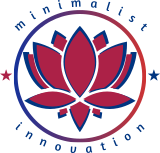From chaos to clarity: The power of disciplined execution
We introduced the concept of Change Engineering, in our last blog post, as a structured approach to drive innovation by aligning people, processes, and technology. In this blog, we provide a recipe for success with Change Engineering, highlighting the interplay of essential components and their importance in driving structured growth, long-term vision, disciplined execution, and a commitment to excellence.
“Software development is a discipline of discipline .”
– Steve McConnell (Author of Code Complete)

The building blocks of disciplined innovation
Success in innovation requires more than great ideas—it demands a cohesive framework where every component works in harmony. From understanding customer needs to crafting robust architectures, each element plays a critical role. When aligned, these components create scalable, impactful solutions. When neglected, they lead to inefficiencies, missed opportunities, and unsustainable growth.
Component |
Definition |
Example |
Deliverables |
Outcome,if ignored |
|---|---|---|---|---|
Need |
Understanding customer pain points to address core problems. |
A document fraud detection SaaS realized customers wanted full solutions, not fragmented parts. |
Market research, user interviews, problem definitions. |
Solutions fail to meet real customer needs, leading to low adoption. |
Strategy |
High-level plan defining business goals and how to achieve them. |
Decided to provide full solutions through strategic partnerships. |
Vision statements, measurable goals, aligned initiatives. |
Teams build misaligned features or over-engineer solutions, wasting resources. |
Business Model |
Framework for creating, delivering, and capturing value. |
Integrated core strengths (Computer Vision Models and Decisioning Engine) with partner solutions for predictable transaction-based revenue. |
Revenue models, pricing strategies, value propositions. |
Solutions fail to generate sustainable revenue. |
Service Design |
Designing processes that deliver seamless service experiences. |
Developed onboarding and offboarding processes for tenant channels and white-labeling support. |
Process workflows, service blueprints, user experience plans. |
Business operations cannot scale with growth, leading to inefficiencies and failures. |
Solution Architecture |
Technical blueprint for implementing the solution. |
Introduced multi-tenant deployment models, leveraging cloud (AWS, Azure) documentation for scalability. |
High-level system designs, technical specifications. |
Technical debt accumulates, making future updates costly. |
Reference Architecture |
Reusable framework guiding consistent and secure solution design. |
Used cloud (AWS, Azure) reference architectures and built IP-specific decisioning engine frameworks. |
Framework templates, compliance checklists, reusable assets. |
Long-term sustainability is compromised, increasing delivery timelines and creating inefficiencies during transitions. |
Customer Scenarios |
Detailed descriptions of user interactions with the product or service. |
Connected scenarios to the Jobs-To-Be-Done framework to ensure alignment with user needs. |
Journey maps, use cases, user personas. |
Solutions miss the mark for end-user needs. |
